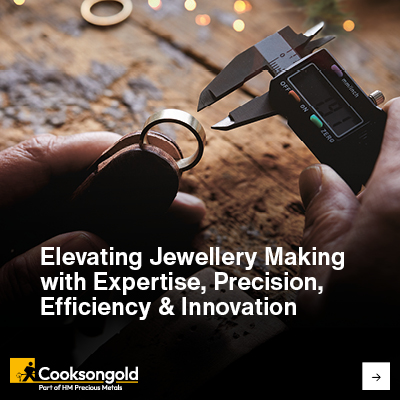RCA Show 2023 Highlights
Highlights of the RCA2023 Show
Reading Time:
1 min {{readingTime}} mins
Last week we ventured into the wilds of Battersea, London specifically to the (new to us) campus for Jewellery, Goldsmithing, Metalwork and Jewellery at the Royal College of Art for the 2023 Show.
The show, split over two levels, also had a mixture of glass and ceramics on display. Here are our highlights of the now one year MA cohort.
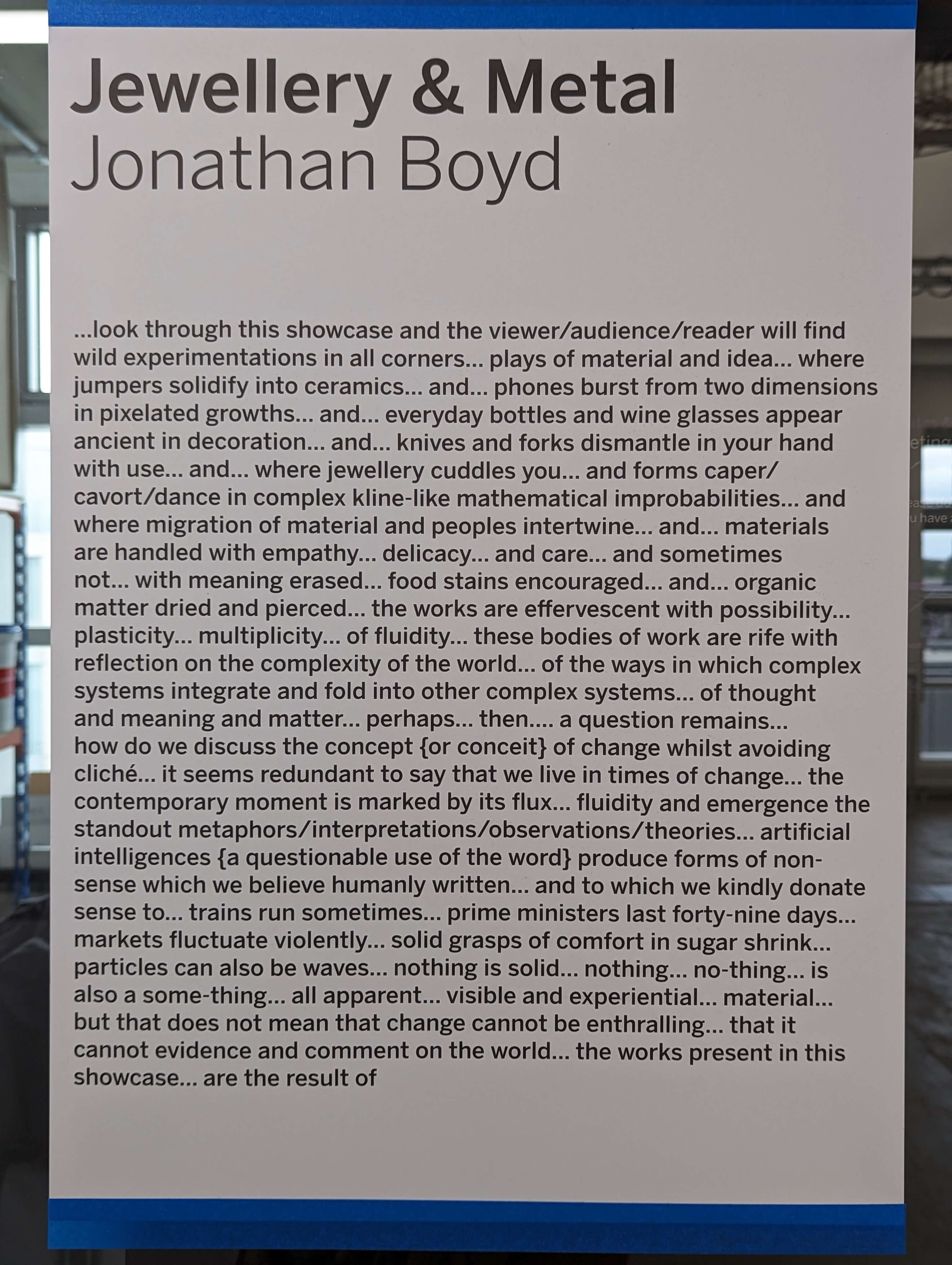
Machi de Waard
.jpg)
I make my modernist silver and gold jewellery at my studio in Reading, Berkshire, where I’ve been working for more than 15 years. From January 2010 to December 2011, I was Jeweller in Residence at South Hill Park Arts Centre in Bracknell. In 2021, my book that I wrote with fellow jeweller Janet Richardson, “Silver Jewellery Making”, was published by award-winning craft publisher Search Press. Combining my studio practice with teaching, I teach jewellery making in Berkshire and Oxfordshire. My work is regularly shown at galleries and exhibitions in the UK.
My work is not reactive. It is internally generated: a manifestation of me in metal. Informed by the visual language of twentieth century modern art, I reject frippery and embrace clarity.
Distilled into a self-imposed strictly limited palette, my work focuses on visually and physically strong shapes such as lines and circles. I find my creativity by limiting myself to only a few shapes, making iterations of those shapes with varying details following an internal logic. My perfectionist tendencies show in two ways: a drive towards design that is as clean and crisp as possible and a desire to push craftsmanship to higher levels.
But it’s not all serious: a lightness of touch is present; perhaps an unexpected detail, a spot of optical illusion or a miniature scale to invite approachability. Although my work uses quite formal visual language, there’s an edge of playfulness that entices the viewer to come closer, to interact with the pieces. These handmade pieces invite the viewer to handle them, feel their weight, touch their edges and explore their details.
Recipient of a Behrens Foundation Bursaries Award
Ruoyi Jiang
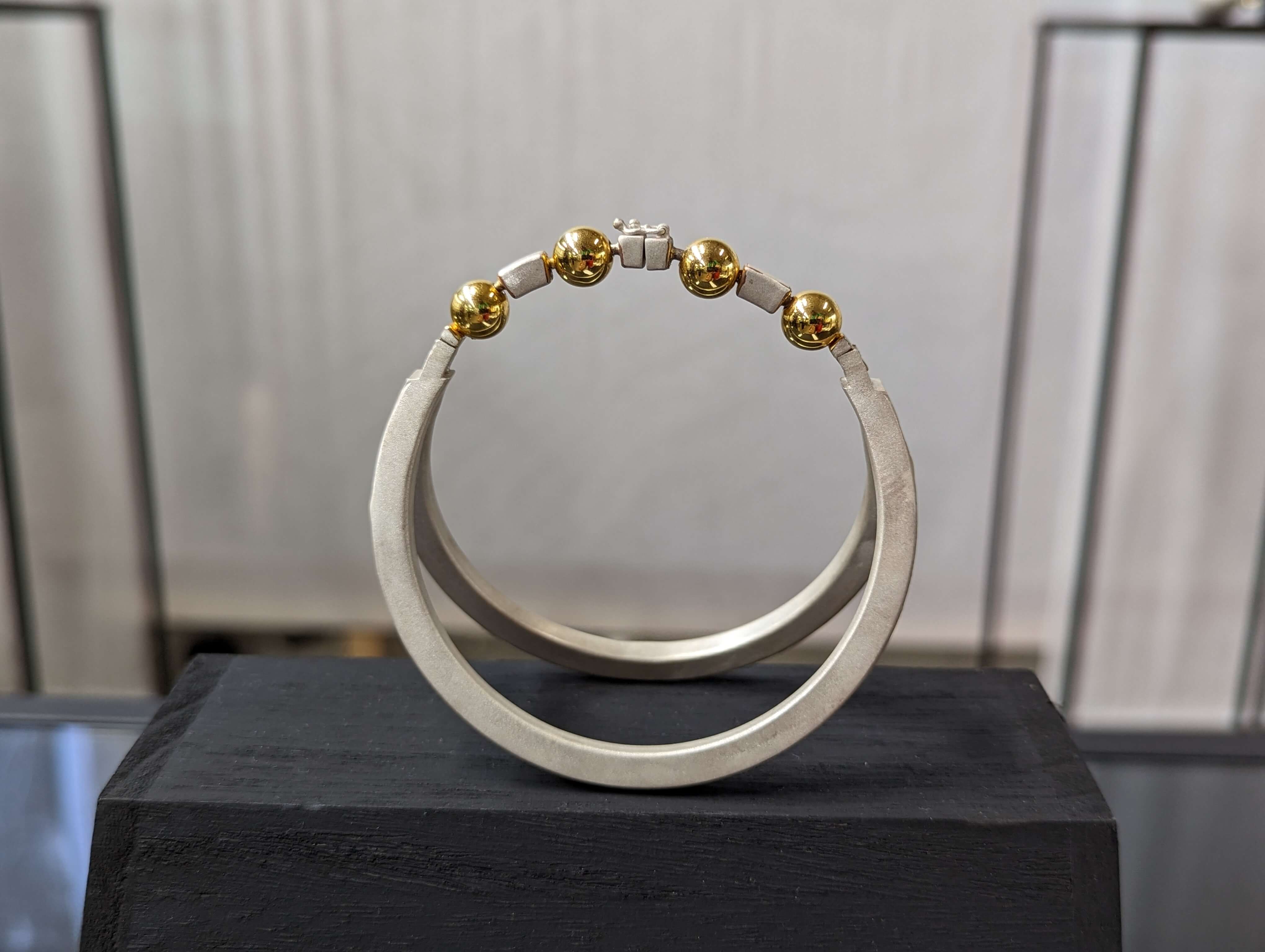
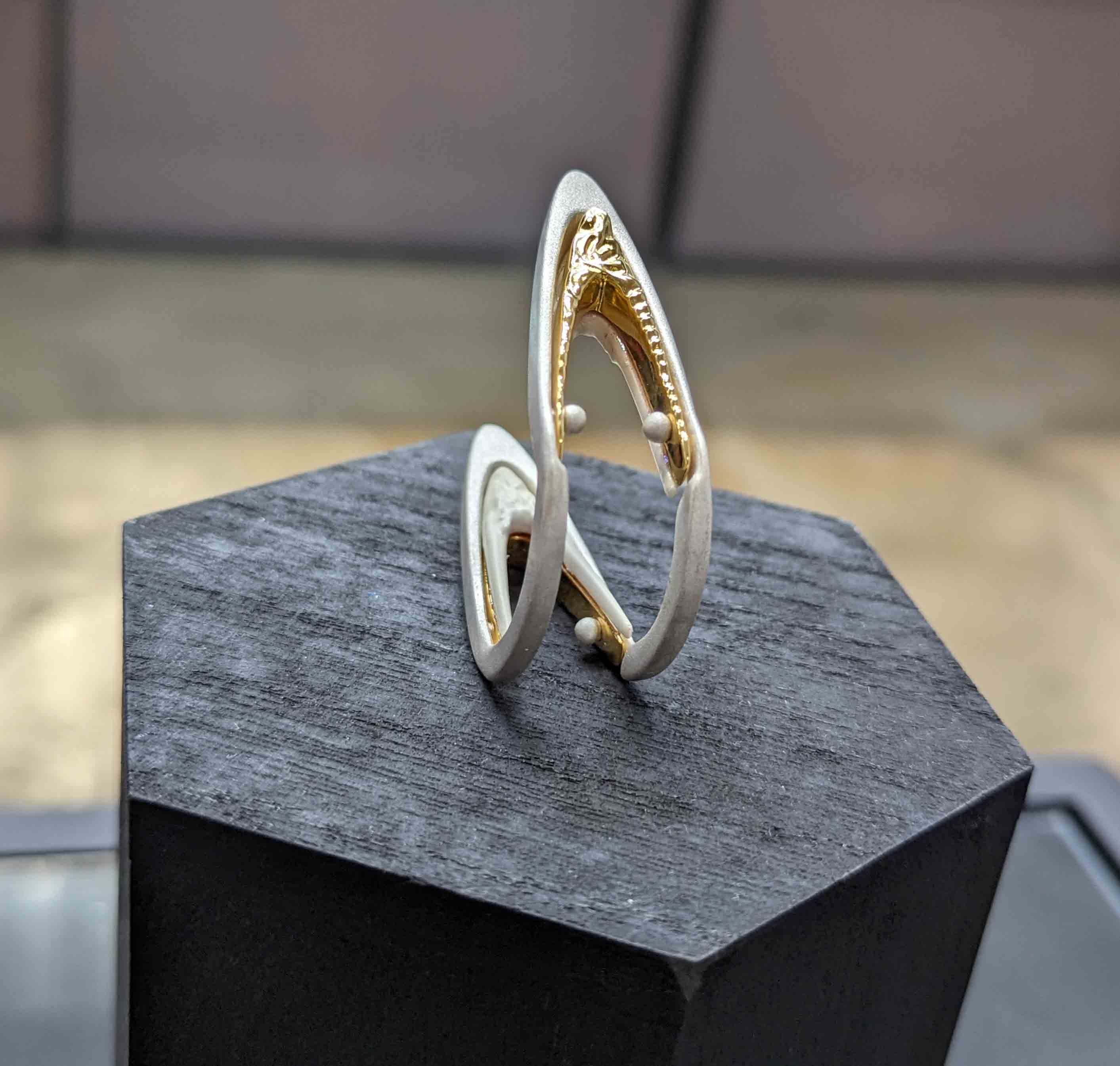
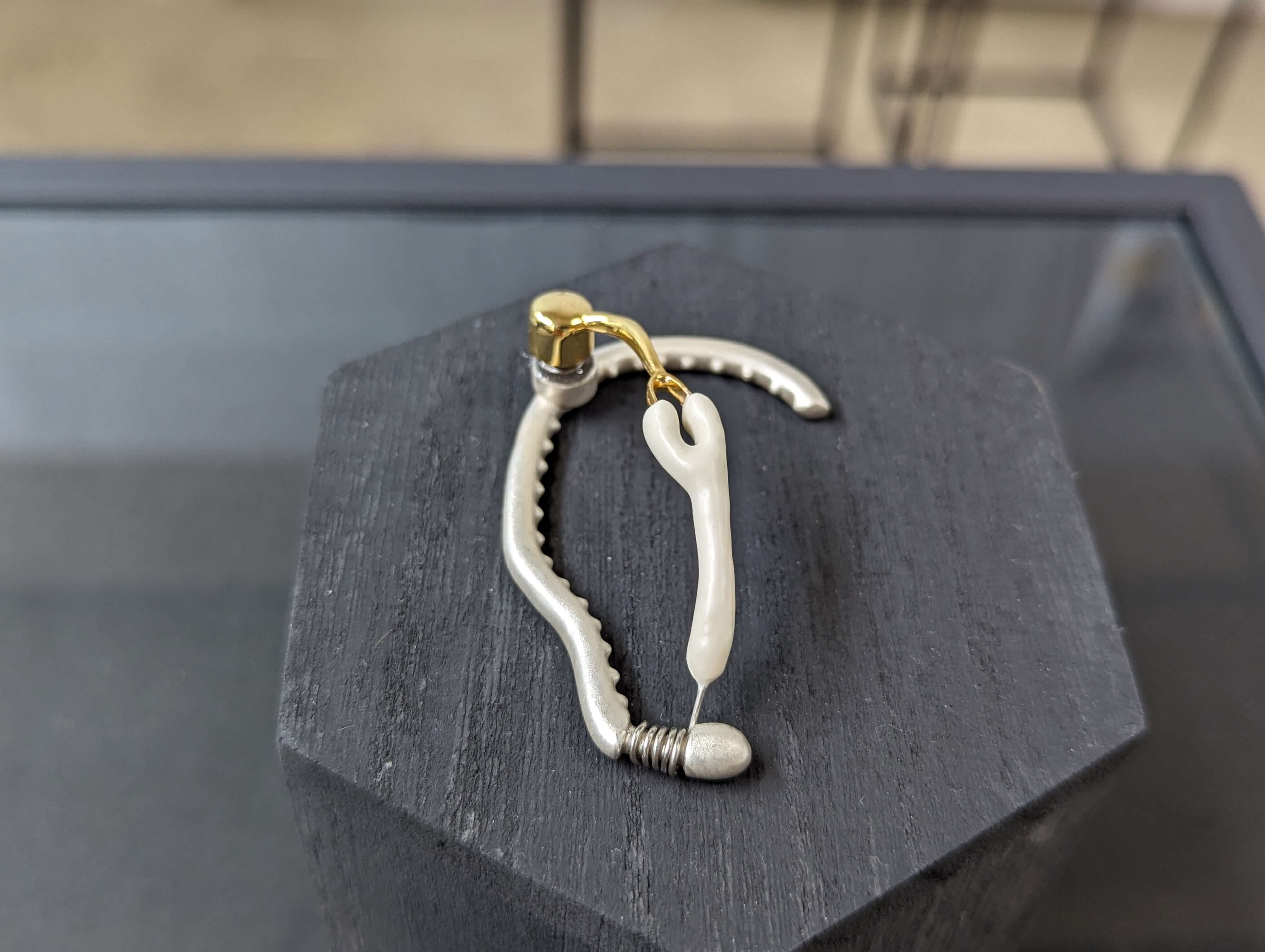
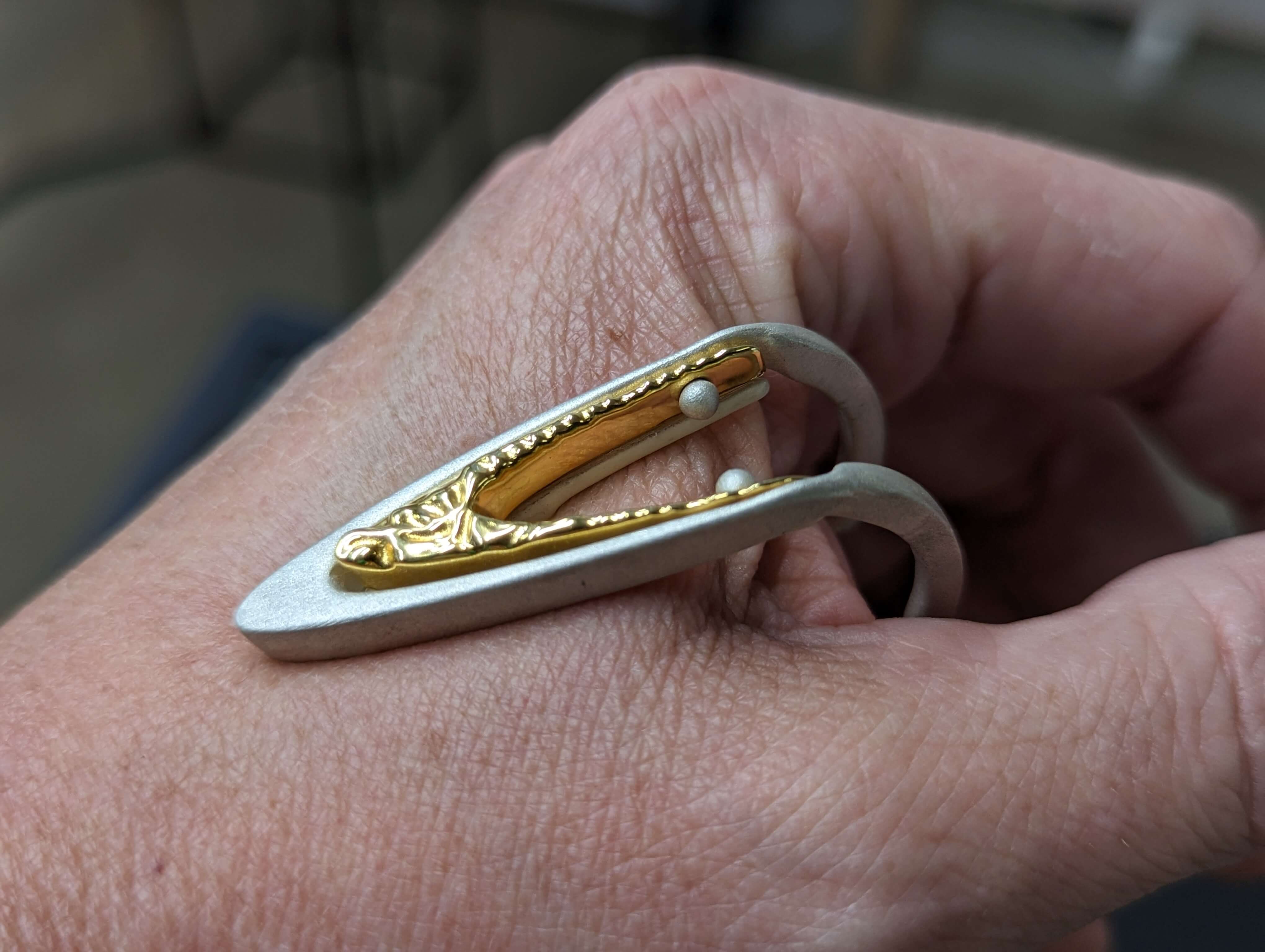
Can Jewellery Heal Me?
Stemming from the language of Chinese healing practices, Ruoyi's jewellery works selected the symbols - acupuncture points and the human body shape. The collection on interpreting the 'dramatic' relationship between objects and the human structures. The skin-like beige coloured silicone closely corresponds to the metal buttons with a pressing effect. This design depicts a structure similar to the shape of a human skeleton, which is easy to present as a daily accessory.
Regarding from human body and mechanism, Ruoyi enlarged the movement trend of pressing points; setting the design purpose of 'Futuristic'; 'Utopian' (soft; friendly; willing to interact with people) as the main aesthetics for design development. For her, jewellery is not just a daily accessory. It is more like an extended body part connected to our vessels. Thus, Ruoyi integrated pulse sensor into the collection, in the aim of giving the collection vitality under the aid of the wearer's heartbeat.This kind of detection image can deliver jewellery a sense of "energy" to give the user a 'gentle hint' and encourage people to stop and listen to the object. According to the creation plan, we could have a chance for reflecting on our long-term deafness to the things around us and creating a chance of exciting noise for the programmed life.
Zihan Song
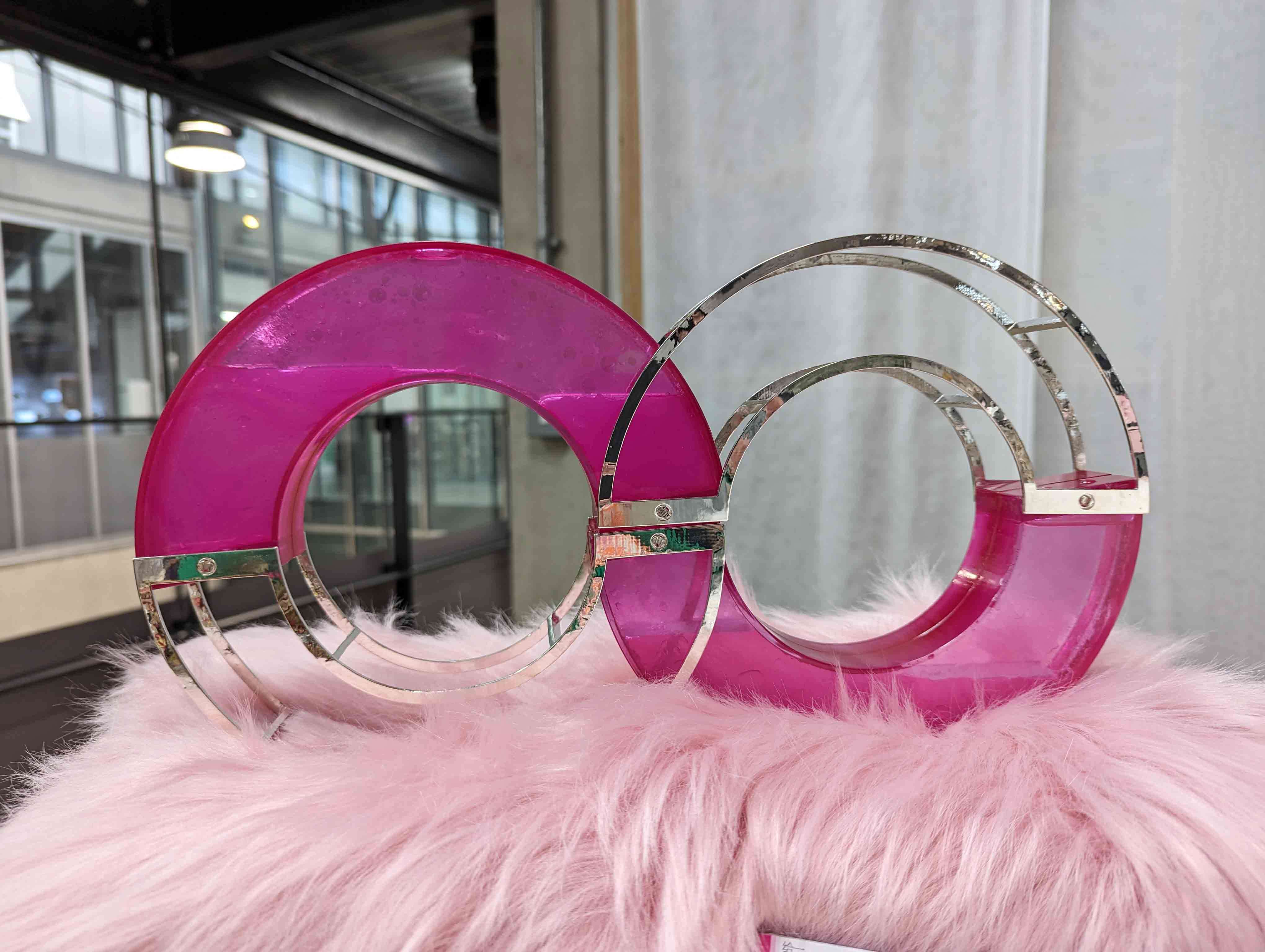
Zihan Song, an interdisciplinary Chinese Fashion designer who equipped professional skills with menswear design and jewellery design. She studied menswear design during the undergraduate while she investigated jewellery design during MA to expand her design pathway. She is an unconventional fashion designer dedicates herself to exploring sex and how it could be expressed through her fashion designs.
The purpose of the collection is conveying the idea that humans could obtain sex pleasure other than sex behaviours. Zihan Song believes that sex pleasure is an internal satisfaction and fulfilment feeling which is on a spiritual level, and it could be acquired other than sexual behaviours. She was trying to capture certain pleasure moments from daily life. Her ambition for the project is applying different mechanical structures to designs to achieve motions.
Banita Mistry
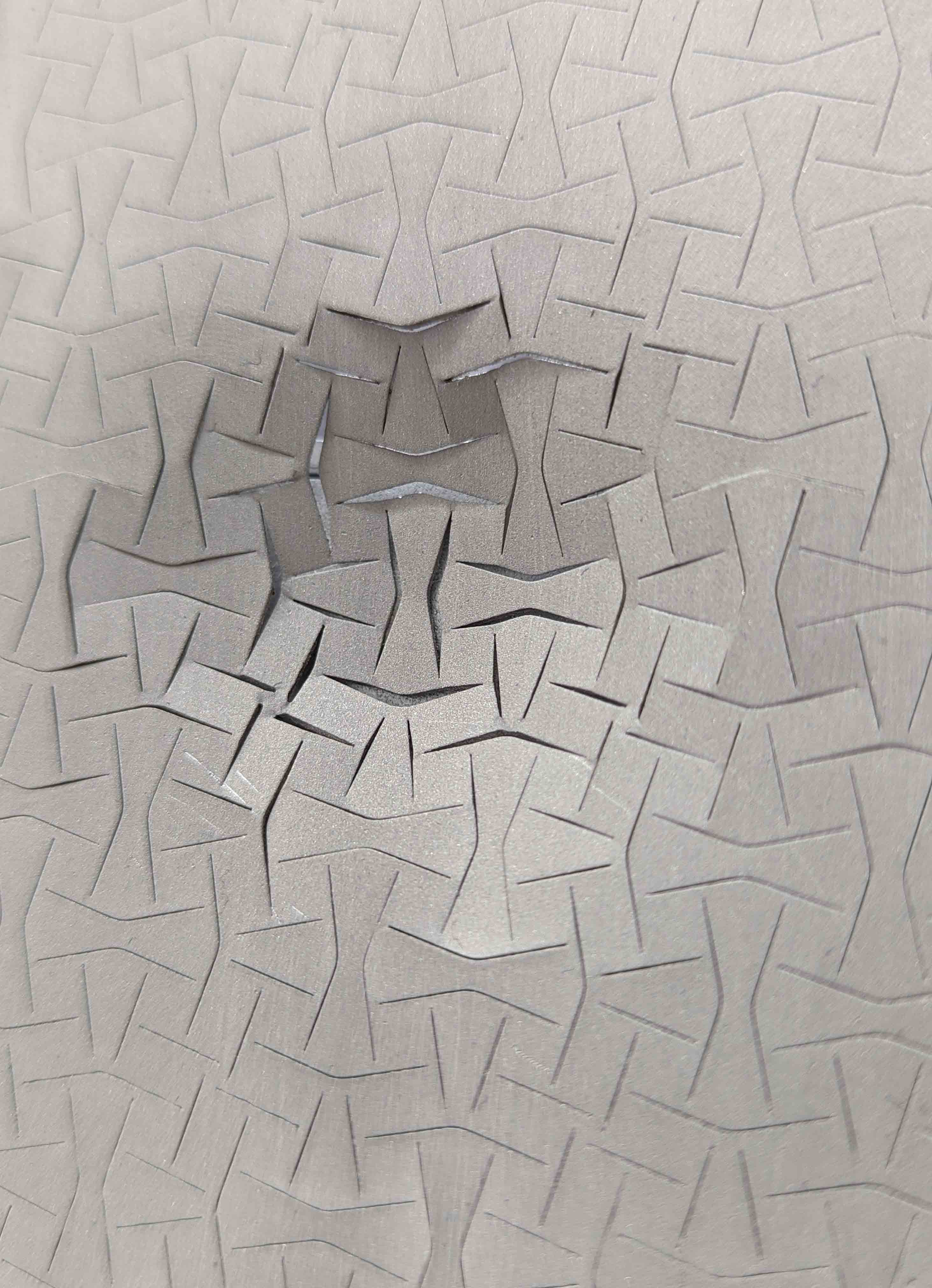
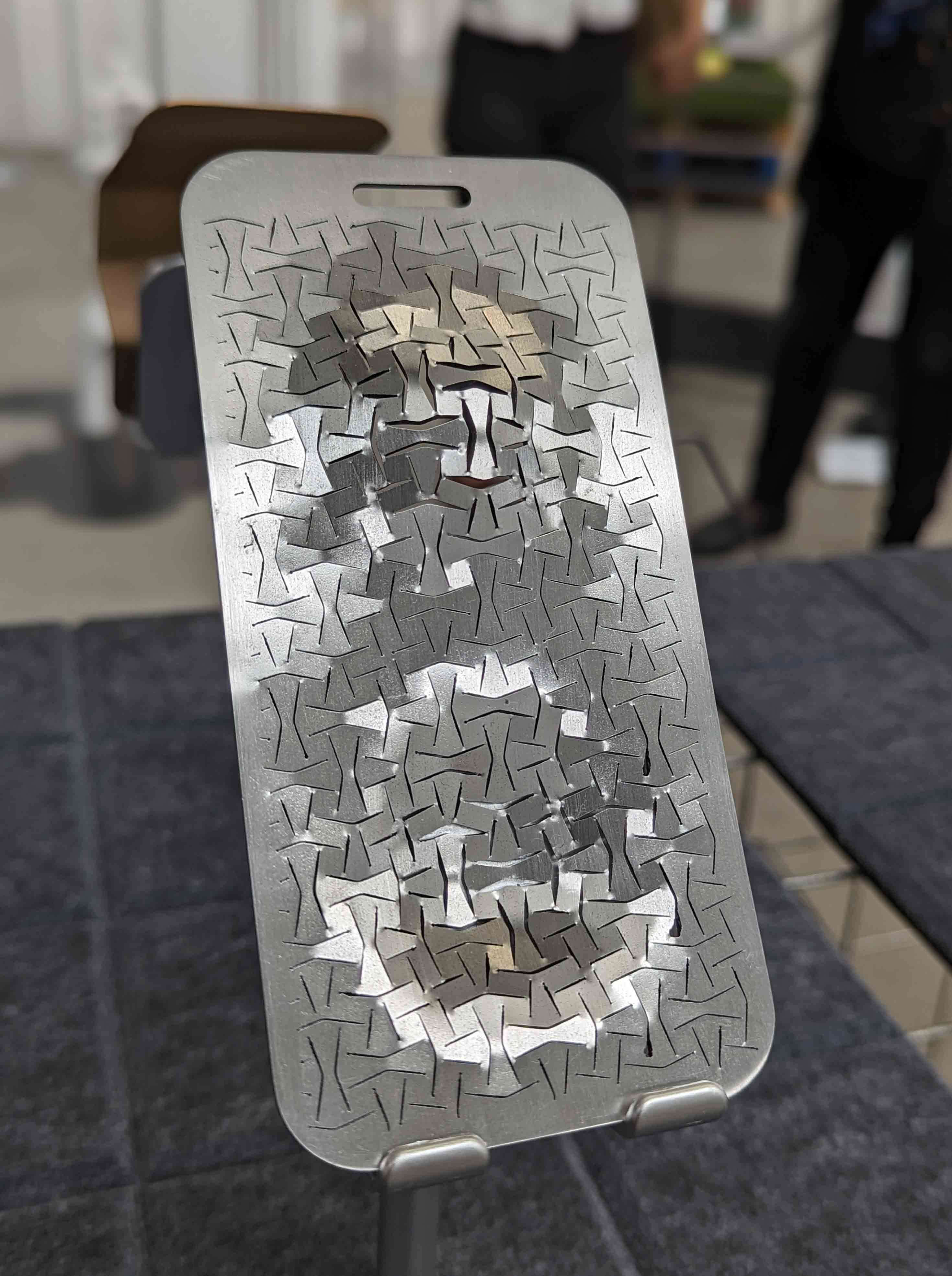
Banita Mistry is a jeweller & artist. Her work explores themes of technology, environment, and adornment to explore the human condition.
After completing her BA at the University of Cambridge in English Literature & Education, Banita practiced as a lawyer in London. She commenced her career as a jeweller in 2012 after training at the British Academy of Jewellery (formerly Holts) and working for internationally renowned jewellers, Alex Monroe, and Ruth Tomlinson. Banita has been a trustee for the Hand Engravers Association of Great Britain and consultant to the Goldsmiths’ Craft & Design Council.
Recent projects include the iAtelier Maker programme with the Crafts Council UK and ceramicist Charly Blackburn (2021/22), and an augmented reality project with Snap Inc & the RCA (2023).
Banita was awarded The Behrens Trust Scholarship (RCA, 2022). She creates art and jewellery under her brand Foreign Body.
In an era of rapidly evolving technology, Banita is compelled by its impact on the human condition. It is this interplay that drives her artistic and material research as she seeks to depict the enigmatic intersection between reality, virtuality, and our boundless imaginations.
Challenges to human perception have historically caused shifts in the sciences, arts, and spirituality. Human environments visibly expanded on microscopic and interstellar levels, and consequently, the granularity of space, time and materiality dramatically unfolded. Today human perception is on the cusp of yet another inflection point. Virtual existences, augmented realities, and artificial intelligence intersecting at increasing speeds, tease human perception and sense of self.
Banita’s work invites viewers to contemplate the profound ways in which technology has become intertwined with our existence and ecologies, influencing our perception of space, body, and time. Central to her exploration lies a curiosity about how we shape and navigate environments and identity, with a special interest in Asian / Desi futurism. From the intimate confines of a ring and the depths of blank screens to virtual worlds and the diasporic object, these spaces embody the metaphysical dichotomies of presence and absence, the visible and the concealed.
Jie Ji
.jpg)
Jie Ji 冀 婕 is a jewellery artist and digital artist from China who specializes in creating captivating jewellery art using digital technology.
Her artistic vision subtly weaves elements from the virtual realm into her creations, resulting in a harmonious convergence of futuristic, mechanical, and natural aesthetics. By subtly interweaving power and beauty in her jewellery designs, she artfully portrays the vitality and strength of women.
Jie Ji begins her research from the one-sided portrayal of women in myths and folk tales over the past few centuries. Women are portrayed with negative characteristics such as submissiveness and weakness.These traits covertly created societal expectations under male-dominated rule, where women were expected to conform to altruistic standards. It served as a disciplinary mechanism employed by male-dominated societies to keep women in check. She believes that myths are powerful tools of political control and reflections of societal dynamics,and all the limitations women face can be glimpsed from myths and folk tales.
Layla Yuanxing Lin
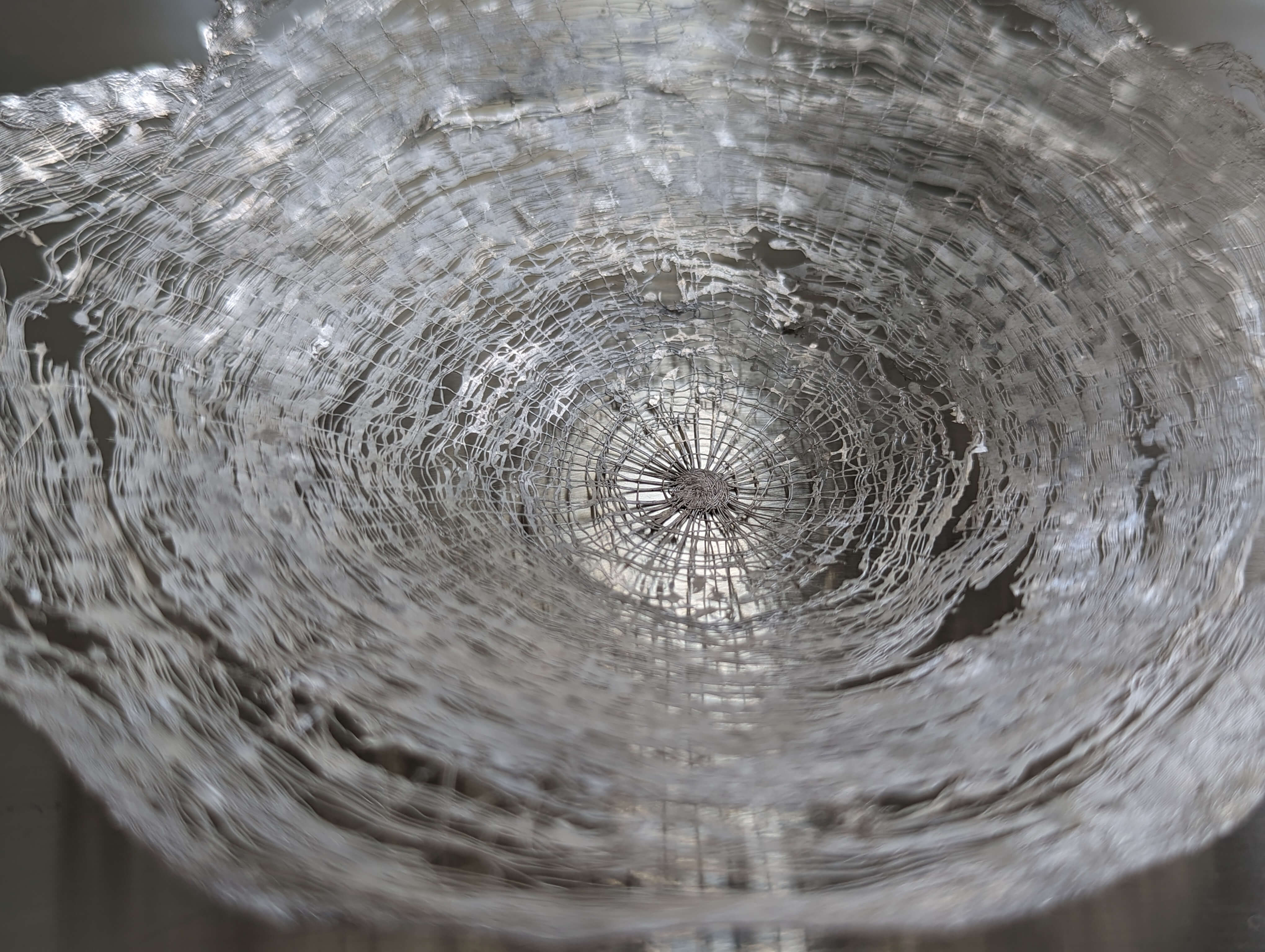
Layla (Yuanxing) Lin, based in London, originally from Xiamen, China, is a jeweller and craft practitioner with specific interests in feminist theory and women’s crafts. After graduating from Jewellery Design at Central Saint Martin’s (CSM) during COVID-19, she spent a year studying Cultural and Critical Studies at Birkbeck College while working as a graduate assistant at CSM; the busy work-and-study year made her reflect deeply about the responsibility of her future as a Chinese female artist. As a result, Layla’s delicately made work has evolved from a wide range of literature, from her leisure reading fiction to Chinese cultural studies and postmodernist feminism. Layla will continue to think critically against rationality and hierarchical power in her craft field in the future.
Occurring in the gap between the visible and the invisible, a crack is then surfaced by our eyes. Roaming between the void of reality and imagination, a ghost of the forgotten soul is then recognised. My practice aims to critique, reflect and question the authenticity of empowered decoration by unveiling its skeleton using the technique of weaving to construct and deconstruct things simultaneously.
Silver is the metal of moonshine, the humble flesh of the noblest gold. It ripples into a pool of subtlety but fuses easily into the space of a void. An object is the appearance of hierarchy. An object is the embodiment of time. An object’s function is to be ornamental while ignoring the crime of decoration and the burden of beauty, such as what is underneath the precious materiality of silver — the cruel inequality of a certain kind of value that marks the line between the miserable and the noble. Thus, in my work the woven texture, alongside the techniques of fusing and soldering, creates dotted surfaces of cracks and fragments, which challenge the solid and dominant power of visible phallocentric history.
The project 'Surfacing The Crack', is a set of objects shaped from hand-woven fine wires, accompanied by several critical texts written by the maker, it aims to challenge the authority of functional and meaningful art objects in the field of jewellery and metal.
To see more of the talent frm this year's cohort go to: 2023.rca.ac.uk
Author:
Published:








